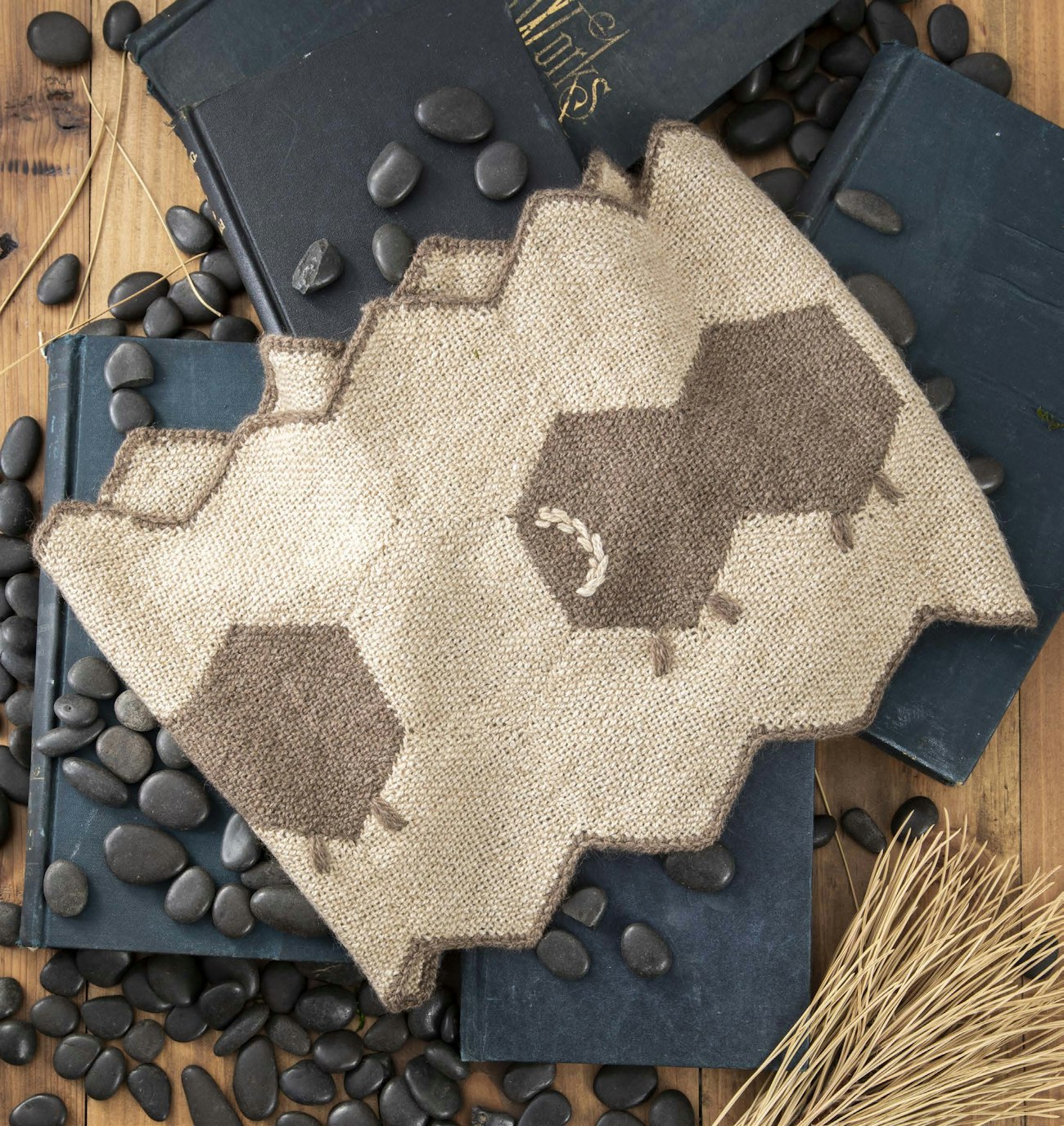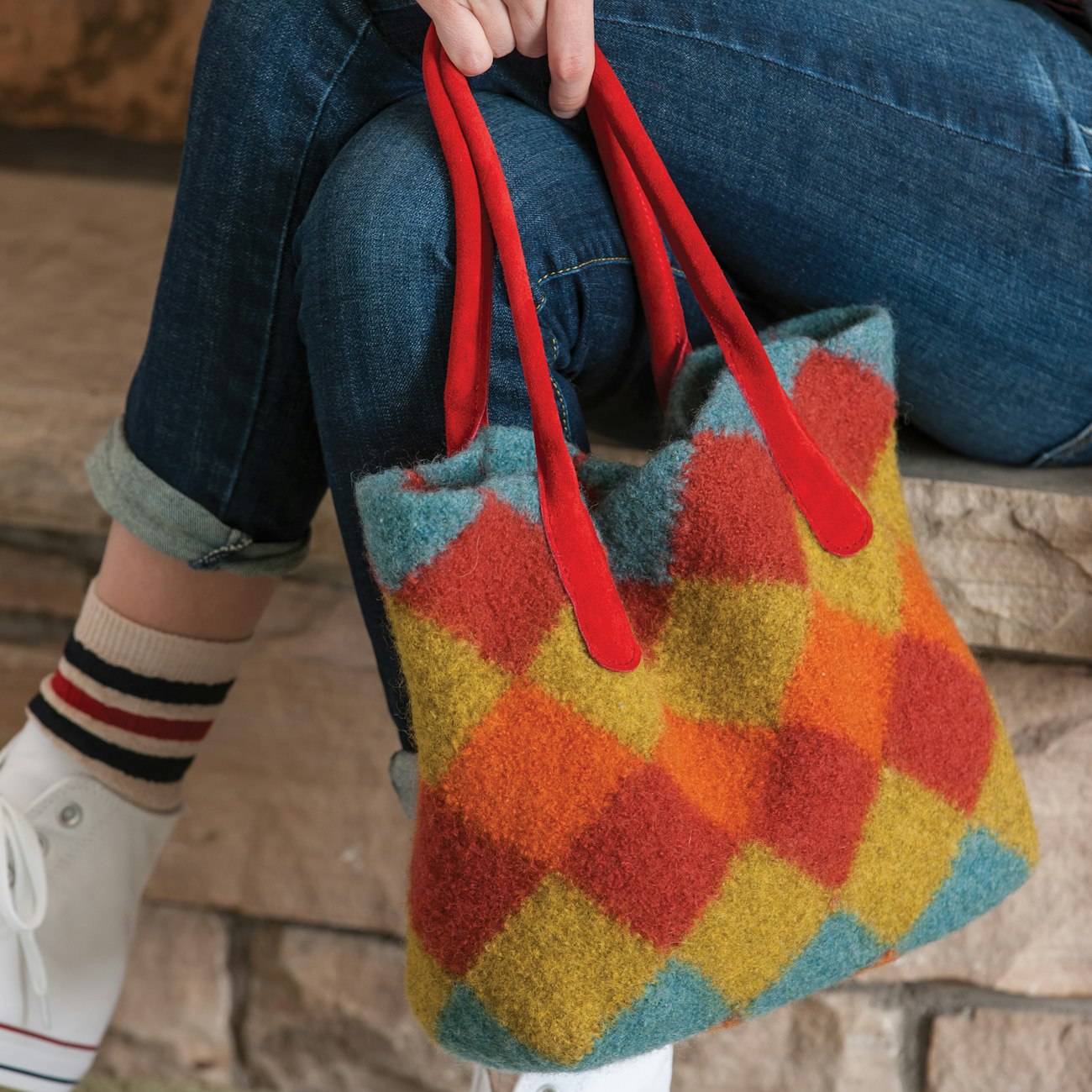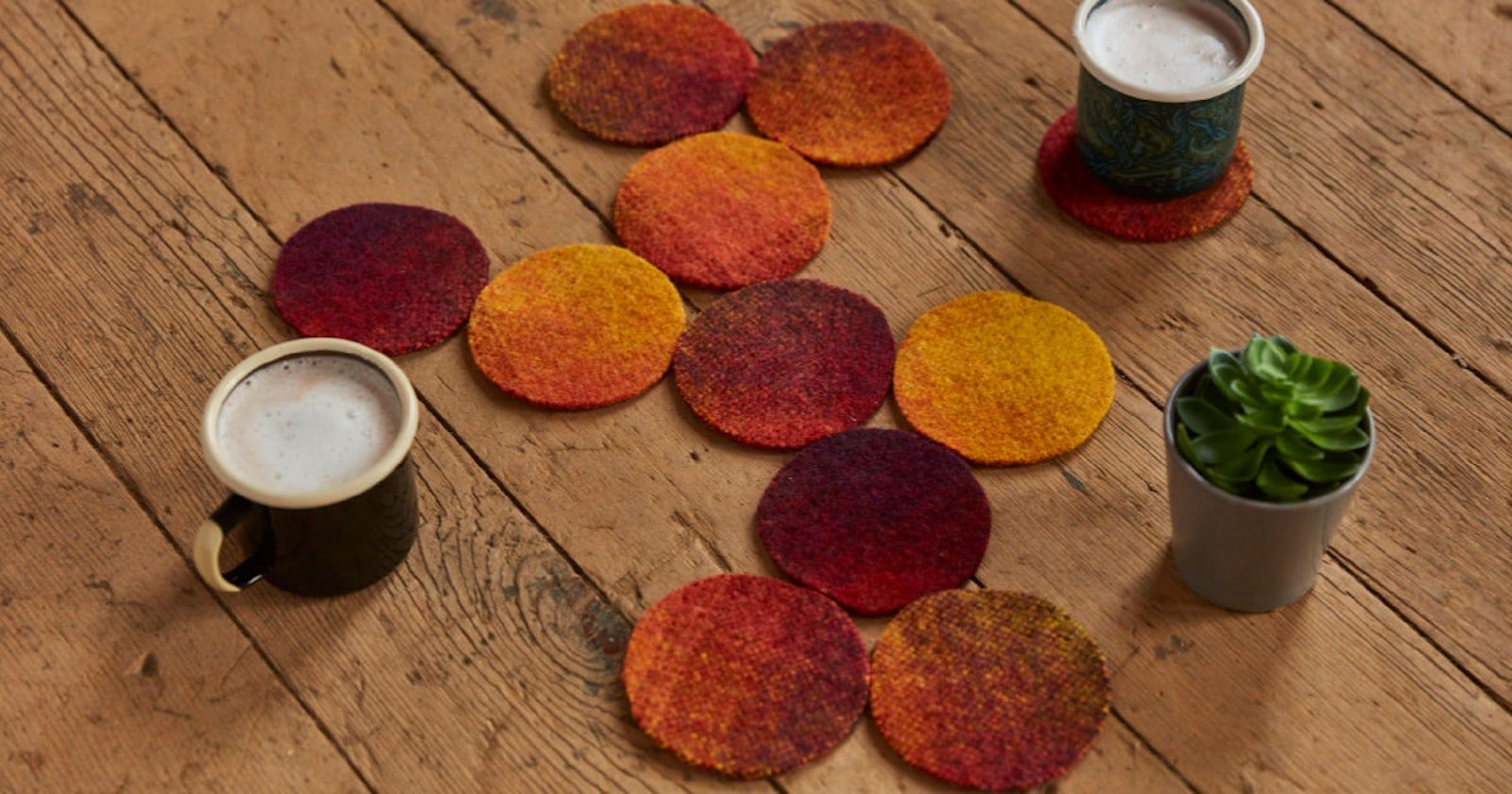When I think of winter, I think of snow, fires in the fireplace, and wool—wool socks, sweaters, and scarves to keep me warm outside; wool afghans and rugs to keep me comfortable inside; and, perhaps most importantly, wool on my loom. Of course, there are so many other reasons to love wool no matter the season: The incredible variety of yarn colors (both natural and dyed), the diversity of wool types and characteristics, the ability to full to create fabric that won’t ravel or even differential shrinkage, the way wool plays nicely when blended with pretty much every fiber—the list goes on and on. When thinking about themes for this Winter 2026 issue of Easy Weaving with Little Looms, I decided it was the perfect time to celebrate wool and wool blends.
 When designing her Qiviut Cowl, Gabi van Tassell considered how to best use this precious fiber. Photo by Matt Graves
When designing her Qiviut Cowl, Gabi van Tassell considered how to best use this precious fiber. Photo by Matt Graves
What We’re Looking For
Project Specifications
For this issue, we’re looking for projects woven using wools and wool blends in a way that showcases the unique characteristics of wool—and not just sheep’s wool, either. We want to see projects using wool from other wool-producing animals including goats, camelids, and rabbits. Projects should be made from at least 50 percent wool or wool-blend yarns (exceptions can be made for the ground warp/weft in Baltic-style and similar bandweaving as long as the pattern warp is wool or a wool blend). All yarns need to be commercially available—projects made from handspun or discontinued yarns will not be accepted. Hand-dyed yarns will be allowed as long as either the yarn is available for sale or instructions are given in the project for dyeing the yarn. As usual, all projects need to be woven on a rigid-heddle, tapestry, pin, inkle, or band loom—tablet and backstrap weaving counts as projects woven on band looms.
 For the fabric of her Diamond Tote, Deborah Shelmidine joined wool pin-loom squares together, then heavily fulled them to make a thick, sturdy, and seemingly seamless fabric. Photo by Joe Coca.
For the fabric of her Diamond Tote, Deborah Shelmidine joined wool pin-loom squares together, then heavily fulled them to make a thick, sturdy, and seemingly seamless fabric. Photo by Joe Coca.
Types of Projects
While we love classic soft wool scarves and shawls—and we plan to include them in this issue—we’d also like to showcase the versatilty of wool and wool blends, not just in the yarns used, but also in the project types. Here are some examples of projects:
- Warp- or weft-faced table runner or mug rugs
- Thick kitchen rug
- Tapestries and other decorative items
- Cozy afghans
- Fulled wool slippers
- A tweed cap
- Garments such as jackets and tops (must include all sewing instructions if not made from a commerically available pattern)
- Bandwoven backstrap for weaving
- Bandwoven belt
- Sturdy fulled tote bag
While you can weave wool in just about any structure or pattern, we’d like to have some projects that highlight some of the more classic ways to weave wool: tartan patterns, krokbragd, herringbone twill, etc. We’d also like to have some items that show the benefits that come with wool’s ability to full including differential shrinkage and projects that are woven, fulled until solid, then cut and sewn. We’d also love to have projects that use different, uniquely textured wools including pencil roving, mohair, bouclé, or even unspun locks of wool.
 Julie Beers used all wool yarns for her tablet-woven Here Be Dragons boot bands. Photo by Matt Graves
Julie Beers used all wool yarns for her tablet-woven Here Be Dragons boot bands. Photo by Matt Graves
Using the Palette
You can find the palette for the issue here. Please note that all natural shades of wool are considered part of the palette. We would like to have a good mix of projects woven in naturally colored wools, projects that combine naturally colored wools with pops of saturated dyed yarns, projects that use heathered yarns (even if they are not as vibrant as what’s on the palette), and projects that use vibrant yarns that match the palette.
 A few picks of pencil roving in the weft create instant visual and textural interest in Jennifer Kwong’s Harvest Festival Runner. Photo by Matt Graves
A few picks of pencil roving in the weft create instant visual and textural interest in Jennifer Kwong’s Harvest Festival Runner. Photo by Matt Graves
Submitting Proposals
We base our project selections for each issue on contributor photographs. With each project proposal, please include a photo or photos of the finished item or of items you’ve woven that are most similar to the item you propose to weave for the issue. We will review the proposals and ask for additional photographs if needed. After the project-selection meeting, we will contact everyone whose project is accepted and ask that it be submitted along with the project paperwork.
Articles do not need to be written before proposing. Instead, please include the article’s outline as part of your proposal. Outlines should be submitted as attachments in Word documents, Pages documents, or as PDFs.
Key Dates
• Proposals for projects (including preliminary photos) and articles due: 12/1/2025
• Additional photographs of projects due: 2/9/2026
• Non-project article text and photographs due: 2/9/2026
• Physical projects with paperwork due: 3/23/2026
Submission Forms and other Resources
Please use our Little Looms submission form for proposals. Note that we’ve recently updated our submission guidelines, and they can now be found here.
Use the email address below for any questions or inquiries that won’t fit into our submission form. Please contact us and ask for a physical address to send any pieces of your proposal that cannot be emailed.
Editorial email: [email protected]
We are looking forward to seeing your proposals for projects and articles!
Happy weaving!
Christina

